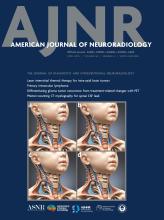This article requires a subscription to view the full text. If you have a subscription you may use the login form below to view the article. Access to this article can also be purchased.
Graphical Abstract
Abstract
BACKGROUND AND PURPOSE: Schizencephaly is a rare brain anomaly that is increasingly detected in utero. There are limited data on the etiology and outcomes in fetal schizencephaly to guide work-up and counseling. We aimed to determine the associated imaging findings, etiology, and outcomes in schizencephaly detected in utero.
MATERIALS AND METHODS: This retrospective cohort study included 22 fetuses with a total of 34 schizencephaly defects identified by keyword search of fetal MRI reports from 1996 to 2022 followed by image review. Follow-up fetal and postnatal imaging, when available, was reviewed. Data on demographics, etiology, and outcomes were extracted from the electronic medical record.
RESULTS: The schizencephaly defect was open in 28/34, most common in the MCA territory (23/34), and commonly involved the frontal lobe (16/34). Additional intracranial abnormalities were seen in all fetuses, including other cortical malformations (13/22), abnormal posterior fossa (12/22), abnormal corpus callosum (10/20), and intraparenchymal hemorrhage (9/22). The cause of schizencephaly was classified as secondary (as evidenced by intraparenchymal hemorrhage at schizencephaly, monochorionic twin gestation, infection, or maternal/placental risk factor) in 64% (14/22), potentially genetic in 9% (2/22), and unknown in 27% (6/22). Among those liveborn (n = 8), we observed the following outcomes: postnatal death (1/8), tube feeding (1/7), shunted hydrocephalus (1/7), and epilepsy (4/7). Among those older than 1 year of age, cerebral palsy (4/5) and speech delay or intellectual disability (3/5) were common. Cortical malformations remote from schizencephaly were associated with epilepsy (P = .03). On postnatal imaging, open defects were often involuted (8/11), and there were high rates of new/additional findings (4/6).
CONCLUSIONS: In this cohort, fetal schizencephaly was always associated with additional intracranial abnormalities. In most cases, there was evidence that schizencephaly was likely secondary to prior injury. Imaging characteristics may provide clues regarding neurodevelopmental outcome. Postnatal imaging is crucial in assessing the evolution as well as detection of additional abnormalities.
ABBREVIATIONS:
- CC
- corpus callosum
- CM
- cortical malformation
- CP
- cerebral palsy
- DGN
- deep gray nuclei
- GA
- gestational age
- ICH
- intracranial hemorrhage
- IPH
- intraparenchymal hemorrhage
- IQR
- interquartile range
- PMG
- polymicrogyria
- PVNH
- periventricular nodular heterotopia
- SP
- septum pellucidum
- TTTS
- twin-twin transfusion syndrome
- US
- ultrasound
- VM
- ventriculomegaly
- © 2025 by American Journal of Neuroradiology













